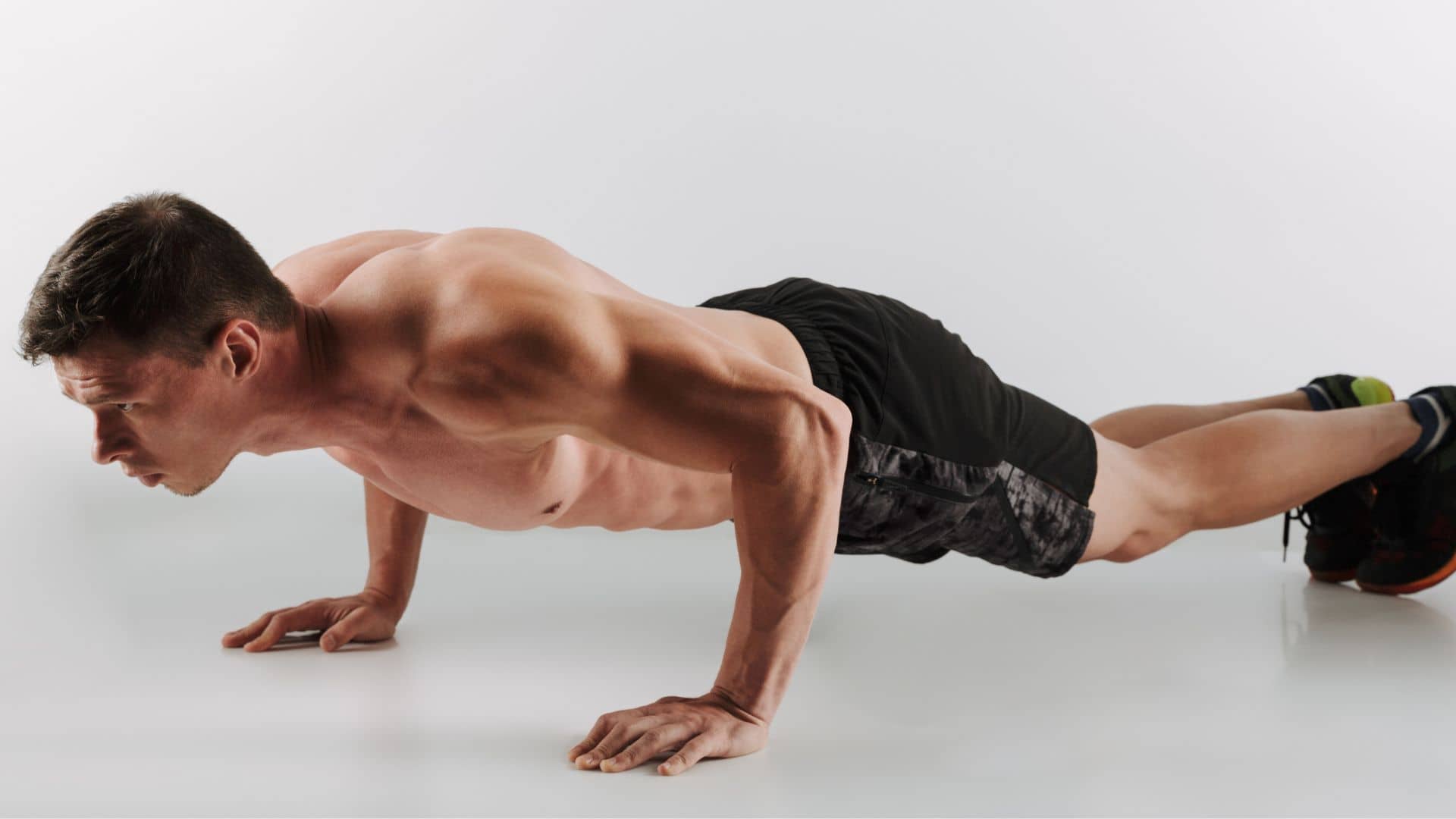If you’re someone who loves pushing their limits and breaking records, you may have considered attempting a pushup record.
However, if you have a history of learning disabilities or cognitive impairments, you may be wondering if this is a feasible goal.
In this article, we’ll explore this question and provide you with some insights and tips to help you achieve your pushup record while taking your unique situation into account.
Individuals with learning disabilities or cognitive impairments can attempt a pushup record. However, it is important to consult with a healthcare professional before starting any exercise program, especially if you have a medical condition or history of disability.
It may also be helpful to work with a qualified fitness trainer who has experience working with individuals with disabilities. They can provide guidance on proper technique and form, as well as modify exercises to meet your individual needs and abilities.
Remember to listen to your body and start slowly, gradually increasing the intensity and duration of your workouts over time. Pushing yourself too hard too quickly can lead to injury or burnout.
With determination, patience, and support, individuals with learning disabilities or cognitive impairments can achieve their fitness goals, including attempting a pushup record.
Yes, you can attempt a pushup record.
Individuals with learning disabilities or cognitive impairments can benefit greatly from regular exercise, just like anyone else.
However, it is important to approach exercise with caution and seek the guidance of a healthcare professional before beginning any new fitness program.
Consulting with a healthcare professional is especially important if you have a medical condition or history of disability.
This is because certain exercises or workouts may not be appropriate for your individual needs and abilities.
For example, if you have a history of joint problems, high-impact exercises like jumping jacks or running may not be recommended.
On the other hand, low-impact exercises like swimming or yoga may be a better option.
It may also be helpful to work with a qualified fitness trainer who has experience working with individuals with disabilities.
They can provide guidance on proper technique and form, as well as modify exercises to meet your individual needs and abilities.
For example, if you have difficulty with traditional pushups, a trainer may be able to suggest modifications or alternative exercises that can help you build strength without risking injury.
Starting slowly and gradually increasing the intensity and duration of your workouts is also important.
Pushing yourself too hard too quickly can lead to injury or burnout, which can be discouraging and make it more difficult to stick with a fitness program in the long run.
In addition to the physical benefits, regular exercise can also have positive effects on mental health and cognitive function.
For example, research has shown that exercise can help improve memory and attention in individuals with cognitive impairments.
With the right guidance and support, individuals with learning disabilities or cognitive impairments can achieve their fitness goals and improve their overall health and well-being.
Here is a table summarizing the key points:
| Key Points |
|---|
| Individuals with learning disabilities or cognitive impairments can benefit from regular exercise. |
| It’s important to consult with a healthcare professional before starting any new fitness program, especially if you have a medical condition or history of disability. |
| Certain exercises or workouts may not be appropriate for your individual needs and abilities. |
| Working with a qualified fitness trainer who has experience working with individuals with disabilities can be helpful. |
| Starting slowly and gradually increasing the intensity and duration of your workouts is important to avoid injury or burnout. |
| Regular exercise can have positive effects on mental health and cognitive functio |
Work with a qualified fitness trainer.
Working with a qualified fitness trainer who has experience working with individuals with disabilities can be extremely beneficial.
They can provide specialized guidance and support to help you safely and effectively achieve your fitness goals.
One of the primary benefits of working with a qualified fitness trainer is their ability to provide guidance on proper technique and form.
This is especially important when attempting exercises like pushups, which require proper alignment and engagement of multiple muscle groups.
Poor technique can not only lead to injury but also reduce the effectiveness of the exercise.
In addition to providing guidance on technique, a qualified fitness trainer can also modify exercises to meet your individual needs and abilities.
For example, if you have difficulty performing traditional pushups, a trainer may suggest modifications such as pushups on an incline or from the knees.
These modifications can help you build strength and progress towards the full exercise over time.
Another benefit of working with a qualified fitness trainer is their ability to provide motivation and support.
Starting a new fitness program can be challenging, especially if you have a history of learning disabilities or cognitive impairments.
A trainer can help keep you accountable and motivated, which can improve your chances of success.
Working with a qualified fitness trainer can help ensure that you are exercising safely and avoiding injury. Individuals with disabilities may be more prone to certain types of injuries, and a trainer can help identify and address potential risks.
Working with a qualified fitness trainer who has experience working with individuals with disabilities can be an important part of achieving your fitness goals and improving your overall health and well-being.
Here is a table summarizing the benefits of working with a qualified fitness trainer for individuals with disabilities:
| Benefits of working with a qualified fitness trainer |
|---|
| Provides guidance on proper technique and form |
| Modifies exercises to meet individual needs and abilities |
| Provides motivation and support |
| Helps ensure safe exercise and avoids injury |
| Can address potential risks specific to disabilities |
Working with a qualified fitness trainer who has experience working with individuals with disabilities can be an important factor in achieving fitness goals and improving overall health and well-being.

Listen to your body and start slowly, gradually.
When starting a new exercise program, it’s important to listen to your body and start slowly.
This is especially true if you have a history of learning disabilities or cognitive impairments.
Pushing yourself too hard too quickly can lead to injury or burnout, which can be discouraging and make it more difficult to stick with a fitness program in the long run.
Starting slowly means gradually increasing the intensity and duration of your workouts over time.
For example, if you’re starting with pushups, you might begin with just a few repetitions and gradually add more as you build strength and endurance.
It’s also important to take rest days in between workouts to allow your muscles time to recover.
Remember that progress is not always linear, and there may be setbacks along the way.
It’s important to be patient and not get discouraged if you’re not seeing progress as quickly as you’d like.
Consistency is key, and small improvements over time can add up to big results.
It’s also important to pay attention to your body and any warning signs of injury or overexertion.
This might include pain, discomfort, or fatigue that doesn’t go away with rest. If you experience any of these symptoms, it’s important to take a break and seek guidance from a healthcare professional or qualified fitness trainer.
Starting slowly and gradually increasing the intensity and duration of your workouts over time can help you avoid injury and burnout, and improve your chances of long-term success.
By listening to your body and being patient with yourself, you can achieve your fitness goals and improve your overall health and well-being.
here is a table summarizing how to start slowly and an example routine schedule:
| Starting Slowly |
|---|
| Listen to your body |
| Begin with low intensity and gradually increase |
| Take rest days in between workouts |
| Progress gradually over time |
| Example Routine Schedule |
|---|
| Week 1: 3 sets of 5 pushups, rest for 1 minute in between sets |
| Week 2: 3 sets of 7 pushups, rest for 1 minute in between sets |
| Week 3: 3 sets of 10 pushups, rest for 1 minute in between sets |
| Week 4: 3 sets of 12 pushups, rest for 1 minute in between sets |
| Week 5: 3 sets of 15 pushups, rest for 1 minute in between sets |
Remember, everyone’s starting point and progress will vary based on individual needs and abilities. It’s important to start slowly and gradually increase intensity over time to avoid injury and burnout.
Achieve your fitness goals.
With determination, patience, and support, individuals with learning disabilities or cognitive impairments can absolutely achieve their fitness goals, including attempting a pushup record.
It’s important to remember that everyone’s journey towards fitness and health is unique, and may require different approaches and modifications along the way. However, with the right mindset and support, anyone can make progress towards their goals.
Setting achievable goals, starting slowly, and gradually increasing the intensity and duration of workouts can help build strength and endurance over time.
Seeking guidance from a healthcare professional or qualified fitness trainer can also be extremely helpful in ensuring safety and proper form.
In addition to physical benefits, exercise can also provide mental and emotional benefits, such as improved mood, reduced stress, and increased self-confidence.
These benefits can be especially important for individuals with learning disabilities or cognitive impairments, who may face unique challenges in their daily lives.
With determination, patience, and support, individuals with learning disabilities or cognitive impairments can achieve their fitness goals and improve their overall health and well-being.
Here is a table summarizing the main points:
| Point | Summary |
|---|---|
| Exercise Benefits | Individuals with disabilities can benefit from exercise like anyone else |
| Caution & Professional Guidance | It’s important to approach exercise with caution and seek guidance from a healthcare professional or qualified fitness trainer |
| Individual Needs | Certain exercises or workouts may not be appropriate for individuals with certain medical conditions or disabilities, so it’s important to consider individual needs and abilities |
| Modifications | A fitness trainer can provide modifications or alternative exercises to help individuals with disabilities achieve their fitness goals |
| Gradual Progression | Starting slowly and gradually increasing intensity and duration of workouts is important to prevent injury or burnout |
| Mental Health Benefits | Regular exercise can have positive effects on mental health and cognitive function |
Conclusion
In conclusion, individuals with learning disabilities or cognitive impairments can certainly attempt a pushup record, but it’s important to prioritize safety and proper technique.
Consulting with a healthcare professional and working with a qualified fitness trainer who has experience working with individuals with disabilities can provide guidance and support throughout the process.
It’s also important to listen to your body, start slowly, and gradually increase the intensity and duration of workouts to avoid injury and burnout.
With determination, patience, and support, anyone can make progress towards their fitness goals and enjoy the physical, mental, and emotional benefits of exercise.


